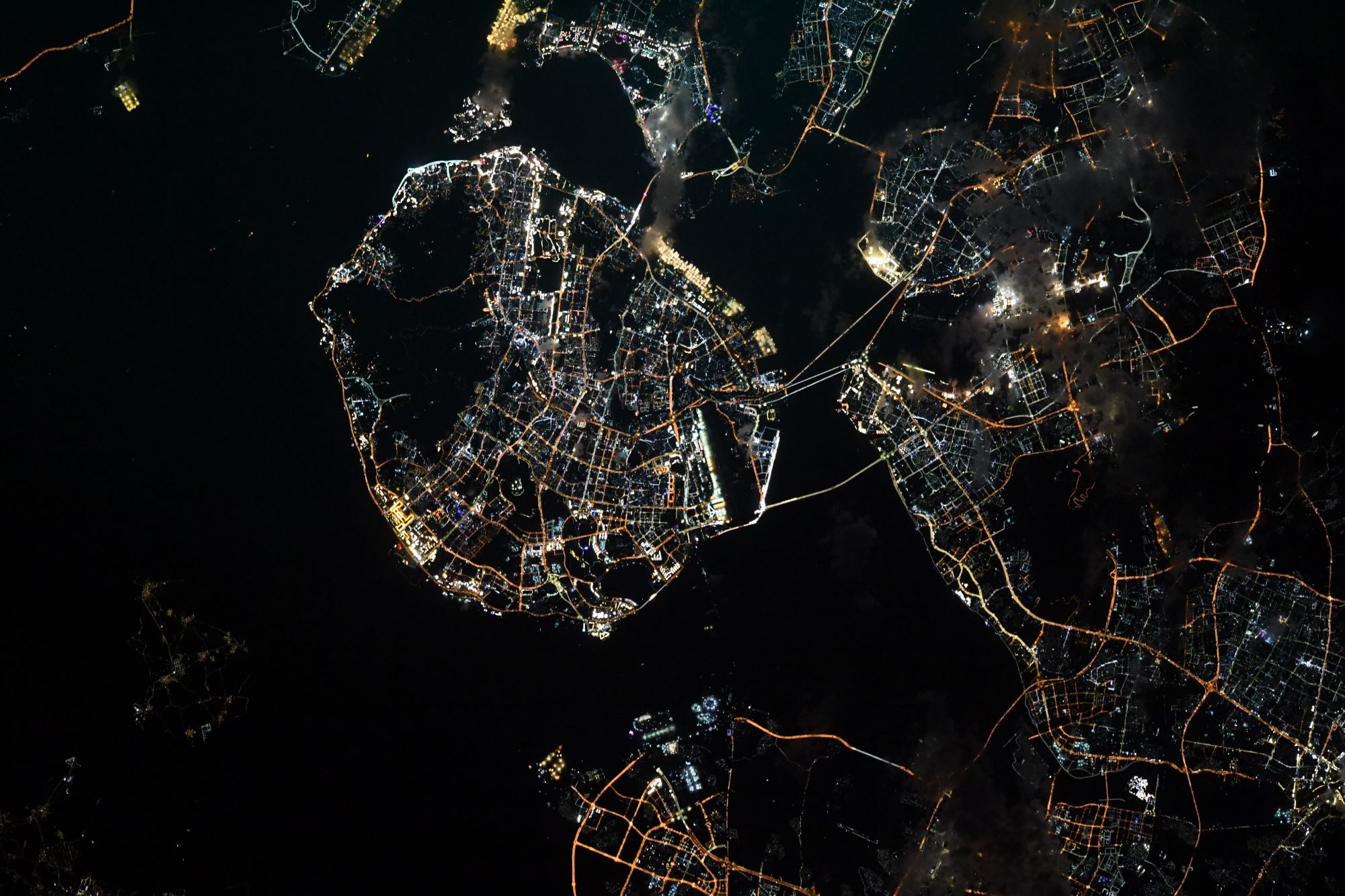[:ja]トマ・ペスケ宇宙飛行士がISSから撮影した中国の廈門です。

廈門市は中国の経済特区の1つであり、福建省唯一の副省級市でもあります。普通話における発音は「Xiàmén」(シャーメン)ですが、日本を含めた他国では、閩南語の漳州方言の発音「Ē-mûi」(エームイ)に沿ったアモイ (Amoy) の名称で広く知られています。福建省南部の九竜江河口付近に位置し、市内には廈門島や鼓浪嶼(コロンス島)などの島嶼部が含まれます。晋代には晋安郡同安県が設置され、清代まで泉州に属しました。明代の1387年(洪武20年)に廈門城が築かれて「廈門」という地名が初めて使用されています。アヘン戦争では1841年(道光21年)にイギリス軍により占領され、翌年の南京条約によって外国人に対して開港、1860年代からは茶葉の積出港として海外に知られるようになった。華僑の出身地として現在も東南アジア各国との交流が盛んであり、タイ、シンガポール、フィリピンが領事館を置いています。
地上の様子はこちらです。

参考文献: Thomas Pesquet’s Tweet
地球俯瞰画像を見る: LiVEARTH
[Earthview Wonders] No.1385: Xiamen, China🇨🇳
Astronaut Thomas Pesquet captured from ISS Xiamen, China.

Xiamen, also known as Amoy from Hokkien pronunciation, is a sub-provincial city in southeastern Fujian, China, beside the Taiwan Strait. Xiamen Island possessed a natural harbor in Yundang Bay, but Fujian’s international trade was long restricted to Quanzhou or to Guangzhou in Guangdong. Under the Qing, both before and after the First Opium War, there was a large-scale emigration of Chinese from southern Fujian who spread Hokkien-speaking communities to Singapore, Malaysia, Indonesia and the Philippines. The overseas Chinese continue to support Xiamen’s educational and cultural institutions. As part of the Opening Up Policy under Deng Xiaoping, Xiamen became one of China’s original four special economic zones opened to foreign investment and trade in the early 1980s. The city is well known for its mild climate, Southern Min culture and Gulangyu Island, as well as its relatively low pollution.
The local scenery on the ground is as follows.

Reference: Thomas Pesquet’s Tweet
See earthview photo gallery: LiVEARTH[:]